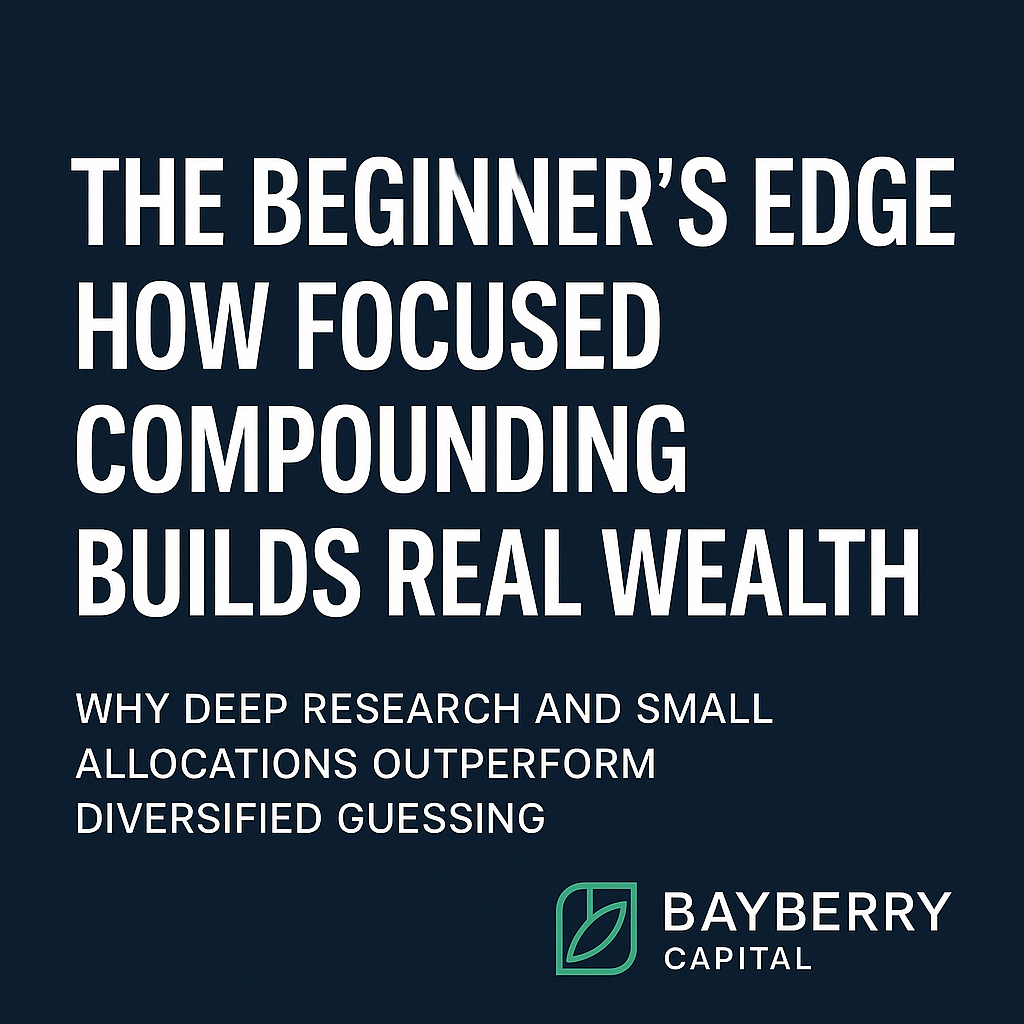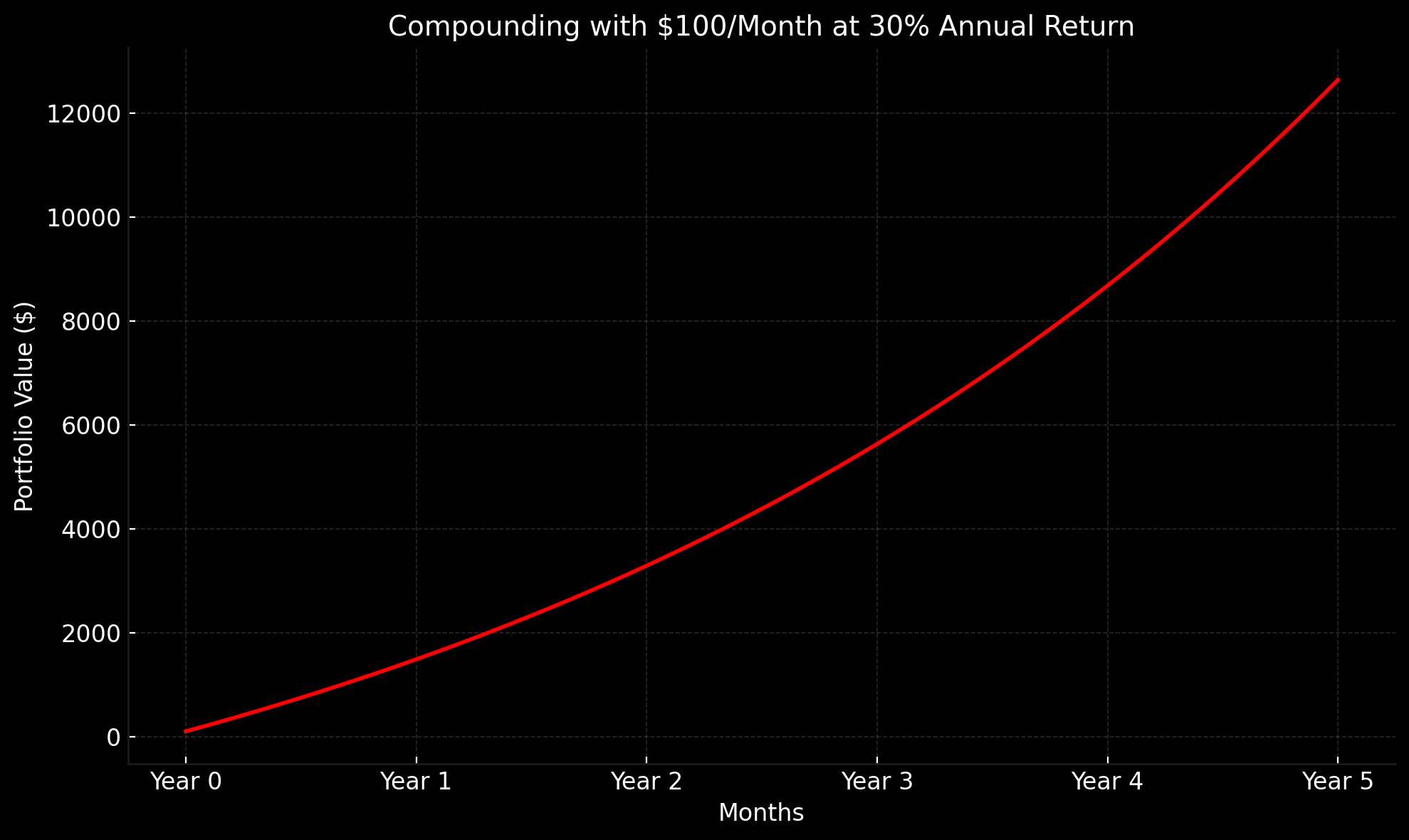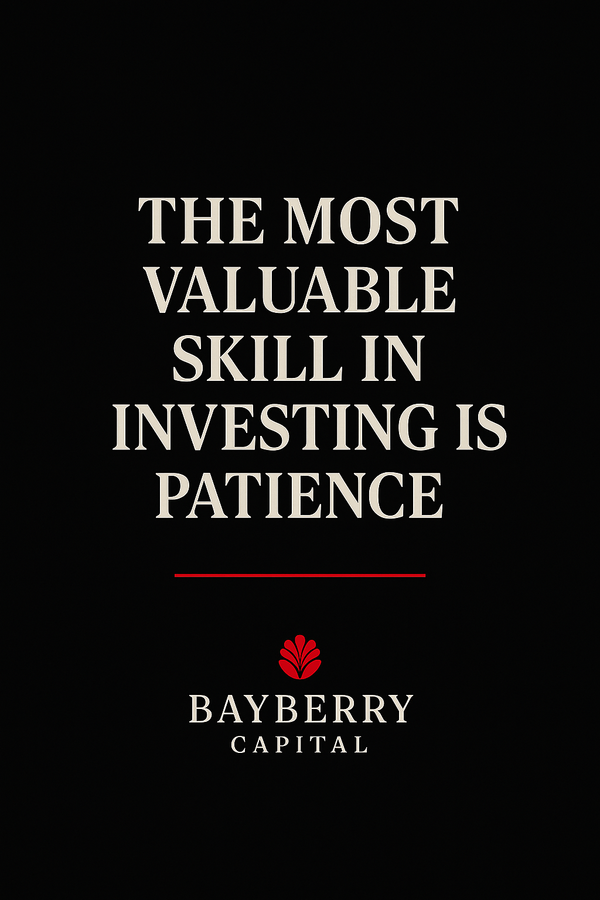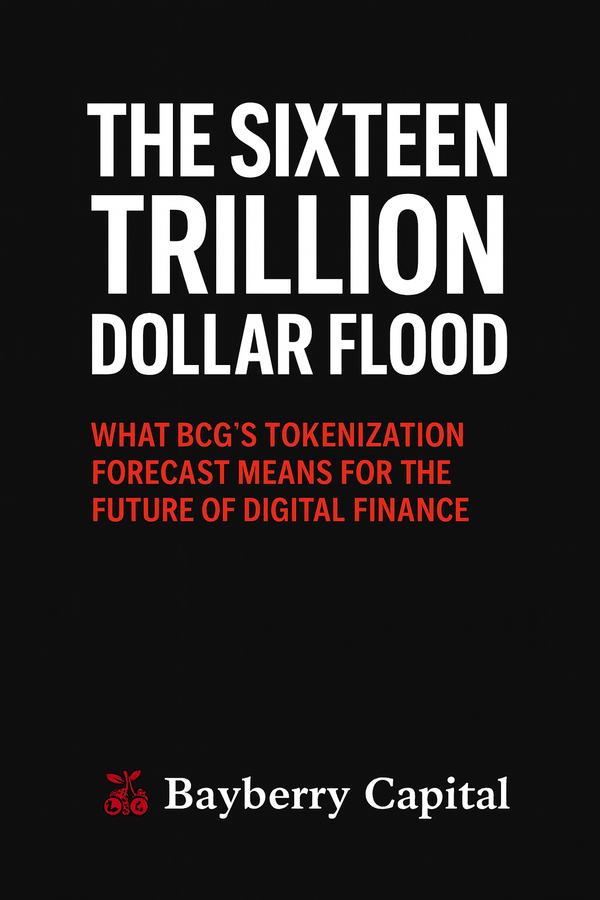The Beginner’s Edge: How Focused Compounding Builds Real Wealth

Why Deep Research and Small Allocations Outperform Diversified Guessing
1. The Illusion of Needing More Capital
Most people think they need a large bankroll to start investing seriously.
They wait until they “have enough” before making moves. But in that waiting… they miss time. They miss cycles. They miss the very thing that builds wealth: compounding.
In reality, wealth doesn’t require volume—it requires vision.
If you have $50, $100, even $200 per month that you can allocate with intention, you’re already positioned better than most.
Because the truth is: capital doesn’t scale portfolios—conviction does.
2. The Power of Compounding in Digital Assets
Let’s run the numbers.
If you invest just $100/month into a single high-conviction asset with a strong long-term thesis—and that asset returns 30% annually (a 10x over 5 years, not unheard of in crypto cycles)—your portfolio compounds like this:

This is the quiet power of conviction + consistency.
No day trading. No chasing pumps. Just sustained, focused accumulation.
While the world jumps from trend to trend, you stay locked on the signal. And the math begins to work in your favor.
3. Depth Over Diversification
Beginner investors are often told to diversify: “Don’t put all your eggs in one basket.”
But in early-stage markets like crypto, too much diversification just spreads your ignorance wider.
Owning 15–30 coins you don’t understand is not a strategy.
It’s a confession that you don’t really believe in anything.
What you can do as a beginner—what you should do—is go deep.
Study the rails of the future financial system. Understand what you’re buying. Concentrate around 1–3 assets with real infrastructure and real-world utility.
And then let asymmetry do the rest.
4. DCA + Attention = Force Multiplier
Dollar-cost averaging (DCA) is your base weapon.
But attention is the multiplier.
- Are you following development updates?
- Are you monitoring regulatory trends?
- Are you adjusting when something no longer fits your thesis?
In crypto, narratives evolve fast. But the macro thesis—the rails being built for the next system—unfolds in waves.
If you stay close to it, your confidence compounds with your capital.
Most investors don’t fail because they picked wrong—they fail because they didn’t stay close enough to know what they were holding.
5. What a 5-Year Plan Really Looks Like
A real beginner strategy might look like this:
- Choose 1–3 utility assets with long-term relevance
- Allocate $100–$300/month across them
- Reinvest during downturns, stay disciplined in uptrends
- Study: read, listen, analyze, refine
- Hold for 3–5+ years

This is how wealth is built quietly.
You’re not trying to time the top. You’re trying to own the runway.
6. From Beginner to Beast
Your lack of experience is your edge.
You’re not jaded. You’re not overexposed. You can move with clarity and conviction before the rest of the world catches on.
In crypto, the best investors are not the loudest—they’re the ones still in the room when the market returns to sanity.
The compounding curve is silent for a long time…
…until one day, it isn’t.
Stay focused. Stay engaged. And give your portfolio the gift of time.
Because in the end, it’s not about how much you start with—
It’s about how long you can keep going.
—
Bayberry Capital
Vision. Discipline. Infrastructure.





